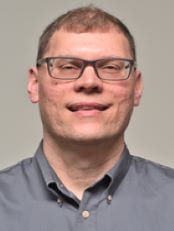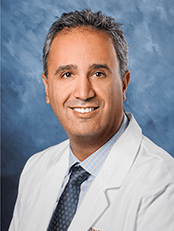The 3rd Annual MHFP Symposium
Topics in the Diagnosis & Treatment of Congenital Anomalies of the Central Nervous System
Synopsis
The 3rd Annual Margaret Hackett Family Program (MHFP) Symposium introduced a variety of central nervous system congenital anomalies and the challenges of diagnosis and treatment. Specific congenital syndromes were discussed in detail to describe various approaches to each entity. In addition, models of care as well as future approaches were discussed.
At the conclusion of this educational activity, participants had learned how to:
- Discuss the complexities of living with a central nervous system congenital anomaly;
- List the various tools used to diagnose and treat specific congenital anomalies of the central nervous system;
- Identify congenital anomalies of the central nervous system that remain difficult to treat;
- Describe current research approaches to several common congenital anomalies of the central nervous system.
Participants
This webinar event was designed for neurosurgeons, neurologists, pediatricians, physical medicine and rehabilitation physicians, nurses, physical and occupational therapists, and other healthcare professionals dedicated to the treatment of central nervous system congenital anomalies.
A total of fifty-eight participants attended the webinar event. A variety of facilities were represented by these participants, such as the University of Chicago, Cedars-Sinai Medical Center, Advocate Children’s Hospital, Advocate Lutheran General, and Boston Children’s Hospital. The webinar had also been received by international participants from Mexico, Canada, and India.
Speakers

Skull Morphometrics and its Relationship to Chiari Symptomology
Francis Loth, PhD
Dr. Frank Loth serves as both the Department Chair of BioMedical Engineering and Executive Director of the Conquer Chiari Research Center at the University of Akron. Dr. Loth’s presentation discussed the fluid dynamics of cerebral spinal fluid (CSF) from an engineering perspective. He discussed how fluid dynamics can be used to measure intracranial pressure in regards to cough associated/non-cough associated headaches. From his presentation, attendees had learned that resistance to CSF motion is higher in cough associated headaches. Dr. Loth also took time to educate attendees on the morphometrics of incidental cerebellar tonsillar ectopia (ICTE), noting that the prevalence of ICTE is greater in pediatrics than the adult population. ICTE is also difficult to find as they occur 1% of the time with no symptoms.

Spinal Muscular Atrophy
Carina Yang, MD
As the Director of Pediatric Neuroradiology at the University of Chicago, Dr. Carina Yang discussed Spinal Muscular Atrophy (SMA) and its complexities, using imaging analysis. SMA is a neurodegenerative genetic disease affecting the central nervous system, peripheral nervous system, and voluntary muscle movement, causing both muscle atrophy and weakness. Dr. Yang discussed the basics of the caustic genetic mutation in SMA and the current understanding of the autosomal recessive variant, or the most common form of SMA.

Tethered Cord & Scoliosis
Christina Sayama, M.D., M.P.H.
Dr. Christina Sayama is an Assistant Professor of Neurological Surgery at Oregon Health & Science University. Dr. Sayama’s presentation focused on tethered cord syndrome and scoliosis. She discussed the different types of scoliosis and the potential for scoliosis to have an association or evolvement from tethered cord syndrome. Dr. Sayama also informed the attendees of the importance of detecting and treating the etiology of scoliosis, which can prevent progression and even improve the curvature of the spine. This could potentially save children from unnecessary and very large scoliosis procedures.

Neurosurgical Complications of Achondroplasia
Moise Danielpour, MD
Dr. Danielpour is an Associate Professor and the Director of Pediatric Neurosurgery at Cedar-Sinai Medical Center. In his presentation, Dr. Danielpour discussed the management of neurosurgical complications in patients with achondroplasia. He educated attendees on the history of achondroplasia, which is the most common form of human short-limbed dwarfism. Dr. Danielpour explained the neurosurgical complications identified within these patients, how these complications have been corrected with surgical interventions, and the clinical outcomes of these patients following these surgical interventions.
Post-event Feedback
At the conclusion of this event, participants were given a post-event survey while claiming their continuing medical education (CME) credits. Around 15 participants completed the survey, and the majority of these participants rated the webinar as “Excellent”, with the survey responses being almost all positive or enthusiastic.
Of the survey participants, 71% plan to implement changes to practice, and the most common changes reported were in medical knowledge (64%) and patient care (50%).
The majority of the survey participants also marked the instructional effectiveness and expertise of the faculty speakers as excellent, and would recommend this activity to others.
